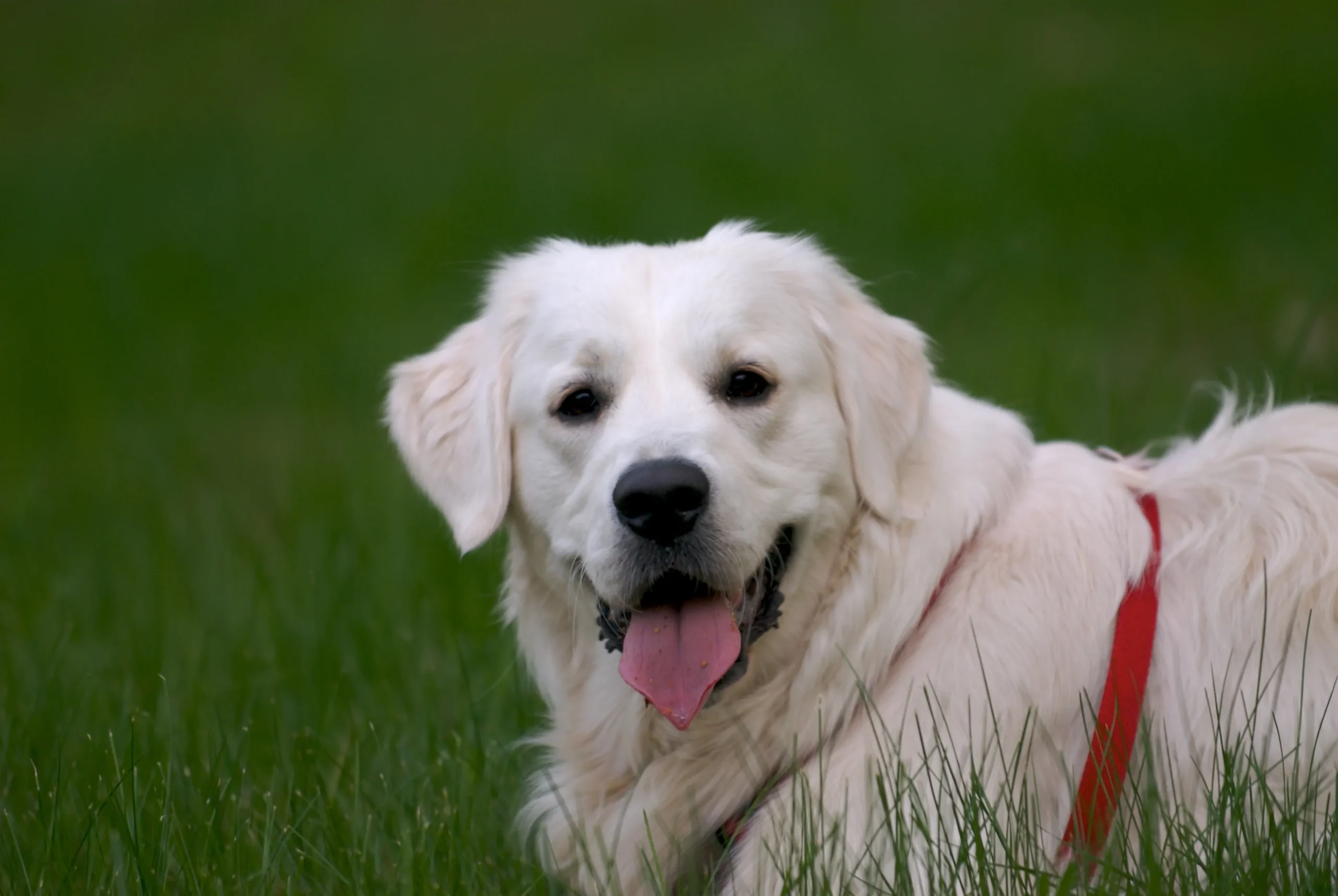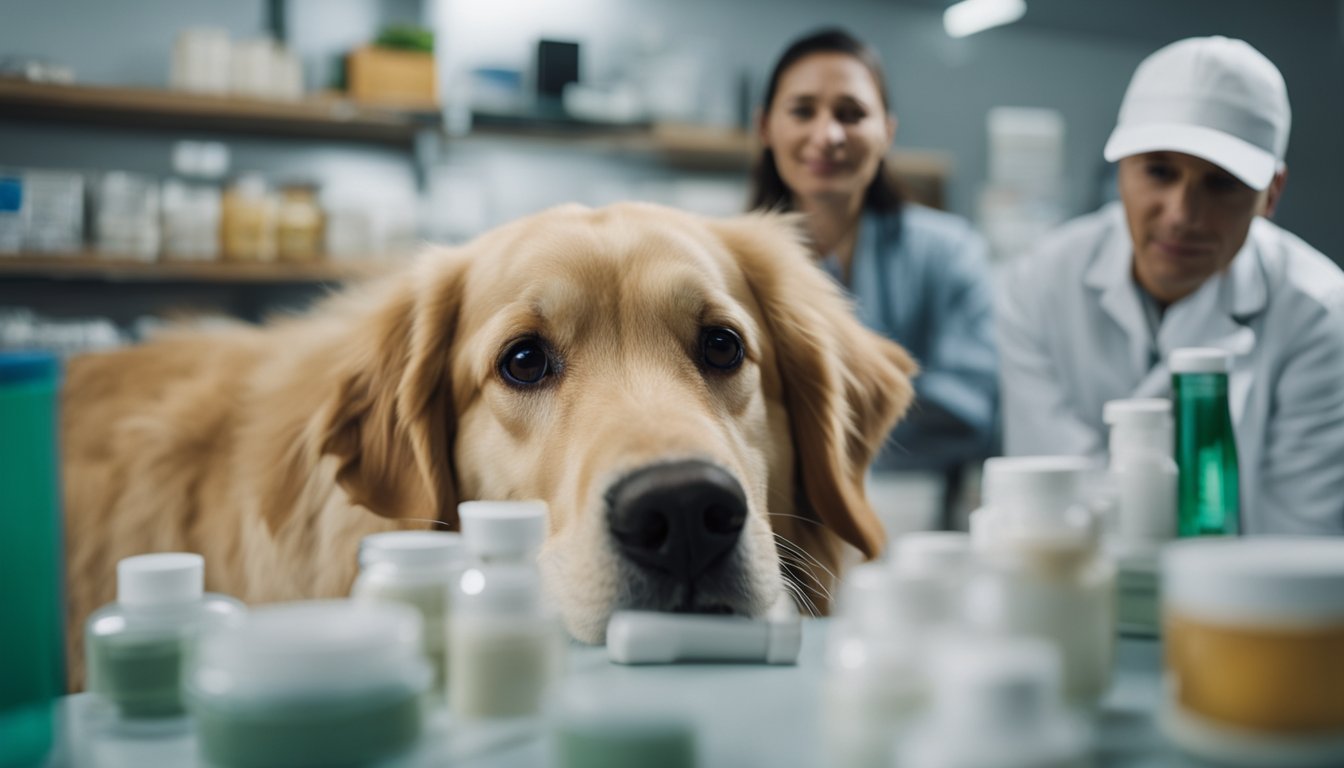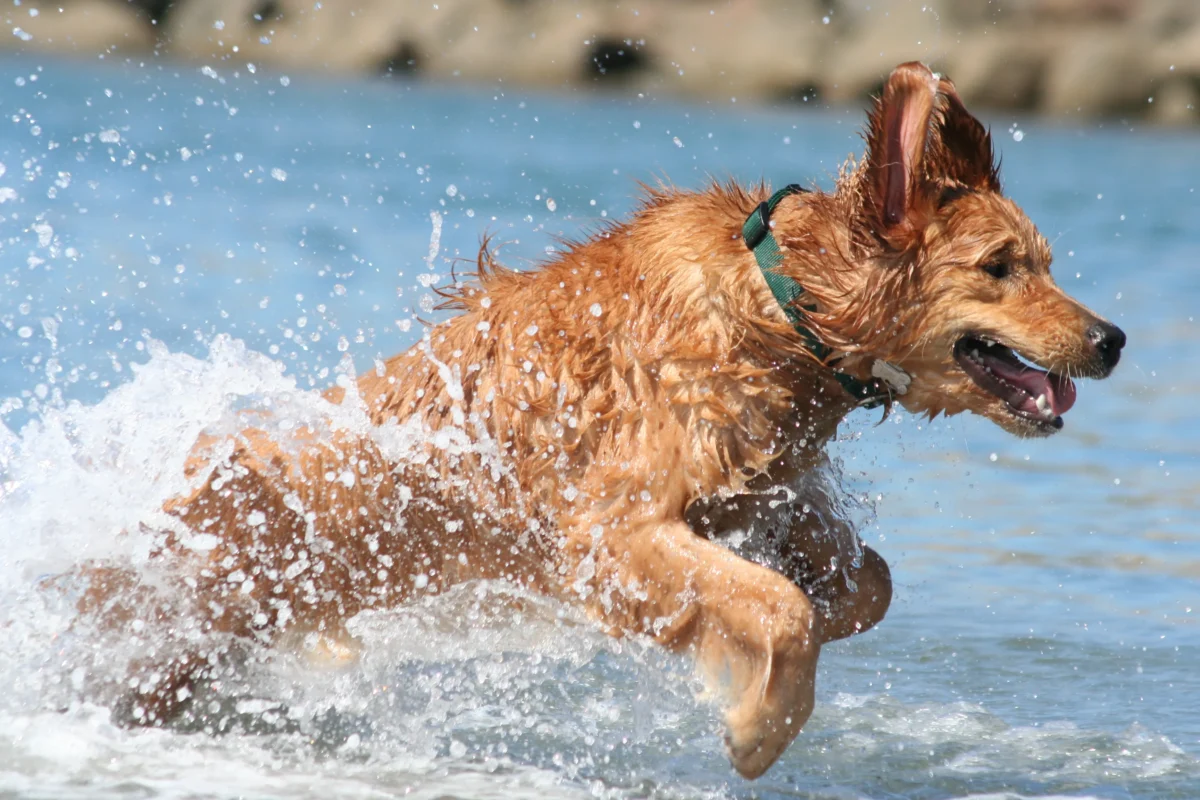Golden Retrievers are beloved for their friendly nature and loyalty, but like all dogs, they can develop lumps and tumors. These growths can range from harmless fatty tumors to malignant cancers, and it’s important for pet owners to be aware of the signs and symptoms of these conditions. In this article, we will explore the different types of lumps and tumors that can occur in Golden Retrievers, as well as the symptoms, diagnosis, treatment options, and prognosis for each.
Understanding Lumps in Golden Retrievers
Lumps and tumors are relatively common in Golden Retrievers, and they can be caused by a variety of factors, including genetics, age, and environmental factors. Some breeds are more prone to certain types of tumors than others, and Golden Retrievers are no exception. While not all lumps are cancerous, it’s important to have any new growths checked out by a veterinarian to rule out the possibility of cancer.
Common Types of Lumps and Tumors
There are several types of lumps and tumors that can occur in Golden Retrievers, including lipomas, cysts, papillomas, and hemangiosarcoma. Lipomas are benign fatty tumors that are common in older dogs, while cysts are fluid-filled sacs that can be caused by infections or other factors. Papillomas are warts that are caused by a virus, and they are usually harmless. Hemangiosarcoma is a malignant tumor that can occur in any part of the body, but it is most commonly found in the spleen or liver.
Key Takeaways
- Golden Retrievers are prone to developing lumps and tumors, which can range from harmless fatty tumors to malignant cancers.
- Lipomas, cysts, papillomas, and hemangiosarcoma are some of the most common types of lumps and tumors found in Golden Retrievers.
- It’s important to have any new growths checked out by a veterinarian to rule out the possibility of cancer, as early detection can improve the prognosis.
Understanding Lumps in Golden Retrievers
https://www.youtube.com/watch?v=UVNB6y7msGU&embed=true
As a Golden Retriever owner, you may have noticed lumps or bumps on your furry friend’s skin. While it’s natural to be concerned, it’s important to understand that not all lumps are cancerous. In fact, most lumps found on Golden Retrievers are benign and harmless.
Lumps can appear anywhere on your dog’s body, including the legs, chest, neck, and back. They can be small or large, soft or hard, and may or may not cause discomfort. Some lumps may even disappear on their own, while others may require medical attention.
It’s essential to keep an eye on any lumps you notice on your Golden Retriever and monitor them for any changes. If you notice any unusual changes, such as rapid growth, bleeding, or discharge, it’s best to seek veterinary care immediately.
Here are some common types of lumps that may appear on Golden Retrievers:
-
Lipomas: These are benign fatty tumors that are common in dogs, especially as they age. They usually appear as soft, round, and movable lumps under the skin.
-
Cysts: These are fluid-filled sacs that can develop anywhere on the body. They may be caused by clogged oil glands or hair follicles and can be either benign or malignant.
-
Skin tags: These are small, harmless growths that hang off the skin. They are usually flesh-colored or slightly darker and can be found in areas where the skin rubs against itself.
-
Mast cell tumors: These are cancerous tumors that can appear as lumps on the skin. They may be itchy, red, and swollen and can grow rapidly.
Remember, not all lumps are cancerous, but it’s always best to have them checked by a veterinarian to be sure. Regular check-ups with your vet can help catch any potential issues early, making treatment easier and more effective.
Common Types of Lumps and Tumors
https://www.youtube.com/watch?v=KZ9CnVnVvic&embed=true
If you are a Golden Retriever owner, you might have noticed lumps or bumps on your dog’s skin. While some of these lumps can be harmless, others can be a sign of a more serious health issue. In this section, we will discuss common types of lumps and tumors that can affect Golden Retrievers.
Benign Tumors and Lipomas
Benign tumors are non-cancerous growths that do not spread to other parts of the body. One of the most common benign tumors in Golden Retrievers is lipoma. According to the American Kennel Club, lipomas are soft, round lumps of flesh beneath the skin that are made up entirely of fat cells. They are usually found in older dogs and are not a cause for concern unless they grow too large or interfere with your dog’s movement.
Malignant Tumors and Cysts
Malignant tumors, on the other hand, are cancerous growths that can spread to other parts of the body. One of the most common malignant tumors in Golden Retrievers is mast cell tumor. According to PetMD, mast cell tumors can be found anywhere on the body and can range from small, benign growths to aggressive, cancerous tumors. Other types of malignant tumors that can affect Golden Retrievers include basal cell tumors and hemangiomas.
Cysts are another type of growth that can be found on your dog’s skin. According to PetMD, cysts are pockets of tissue that can be filled with fluid, air, or other materials. They can be benign or malignant and can appear anywhere on the body. Some common types of cysts in Golden Retrievers include follicular cysts and sebaceous cysts.
Other Skin Growths
In addition to tumors and cysts, there are other types of skin growths that can affect Golden Retrievers. Warts, for example, are small, benign growths that can appear anywhere on the body. Skin tags are another type of benign growth that can be found on your dog’s skin. Histiocytoma is a benign skin growth that usually occurs in dogs less than 2 years of age. Other types of skin growths that can affect Golden Retrievers include cornifying epitheliomas and trichoepitheliomas.
In conclusion, lumps and bumps on your Golden Retriever’s skin can be a cause for concern, but not all of them are cancerous. If you notice any unusual growths on your dog’s skin, it is important to have them examined by a veterinarian. By knowing the common types of lumps and tumors that can affect Golden Retrievers, you can help ensure that your furry friend stays healthy and happy.
Symptoms and Diagnosis
https://www.youtube.com/watch?v=7TqaIG-77wk&embed=true
« Why Do Dogs Howl: Understanding the Reasons Behind This Common Behavior
Best Age to Breed a Golden Retriever: Tips and Guidelines »
If you notice a lump or mass on your Golden Retriever, it’s important to take action right away. Early detection and treatment can help improve your dog’s prognosis. Here are some things to look out for and what to expect during a veterinary examination.

Physical Symptoms
Lumps or masses may be visible on the skin or just under the skin. They can be small or large, and may or may not be painful. Some lumps may be hard or firm, while others may be soft and movable. You may also notice weight loss, lameness, itching, or scratching. If your Golden Retriever is experiencing any of these symptoms, it’s important to take them to the veterinarian for an examination.
Veterinary Examination
During a veterinary examination, your veterinarian will perform a physical exam and may recommend further testing such as a biopsy or fine needle aspiration. A biopsy involves removing a small sample of tissue from the lump and examining it under a microscope to determine if it is cancerous. Fine needle aspiration involves using a small needle to extract cells from the lump for examination.
Your veterinarian may also ask you questions about your dog’s medical history and any recent changes in behavior or appetite. They may also apply pressure to the lump to determine if it is painful or causing discomfort. Based on the results of the examination and any testing, your veterinarian will be able to provide a diagnosis and recommend a course of treatment.
Remember, if you notice a lump or mass on your Golden Retriever, it’s important to take them to the veterinarian right away for an examination. Early detection and treatment can help improve your dog’s prognosis.
Treatment Options and Prognosis
If your Golden Retriever has been diagnosed with a lump, there are several treatment options available to you. The type of treatment recommended will depend on the size, location, and nature of the lump, as well as your dog’s overall health and age. In this section, we will discuss the most common treatment options and the prognosis for each.
Surgical Removal
Surgical removal is often the first line of treatment for lumps in Golden Retrievers. During the surgery, your veterinarian will remove the lump and send it to a laboratory for analysis. This will help determine whether the lump is benign or malignant. If the lump is benign, surgical removal is usually curative, and your dog can go on to live a healthy life. However, if the lump is malignant, further treatment may be necessary.
Chemotherapy and Radiation Therapy
If your Golden Retriever has a malignant lump, your veterinarian may recommend chemotherapy or radiation therapy. Chemotherapy involves the use of drugs to kill cancer cells, while radiation therapy uses high-energy radiation to destroy cancer cells. Both treatments can have side effects, but your veterinarian will work with you to manage any discomfort and keep your dog as comfortable as possible.
Monitoring and Management
After treatment, it’s important to monitor your Golden Retriever closely for any signs of recurrence. Your veterinarian may recommend regular check-ups and imaging tests to ensure that the lump has not returned. In addition, you should keep an eye out for any changes in your dog’s behavior or appetite, as these can be signs of a recurrence.
Overall, the prognosis for lumps in Golden Retrievers is good, especially if the lump is benign. With prompt treatment and careful monitoring, your dog can go on to live a happy and healthy life. If you have any concerns about your Golden Retriever’s health, don’t hesitate to contact your veterinarian. They can provide you with the guidance and support you need to ensure that your dog receives the best possible care.

Prevention and Care
https://www.youtube.com/watch?v=s6GRB1DkLQg&embed=true
Taking care of your golden retriever’s health is crucial to prevent lumps and bumps on their body. Here are some tips to help you prevent and manage lumps in your golden retriever:
Grooming
Regular grooming is essential to keep your golden retriever’s coat healthy and clean. It also helps to prevent skin bumps and infections. Brushing your dog’s coat regularly can help remove any dirt, debris, or dead hair, preventing them from getting trapped in your dog’s coat and causing skin irritation. You can also use a specially formulated pet shampoo, like Vetericyn FoamCare® Pet Shampoo, to help prevent skin conditions from occurring.
Weight Management
Maintaining a healthy weight is crucial to your golden retriever’s overall health. Overweight dogs are more prone to developing lumps and bumps, especially in areas like the chest and legs. Make sure to provide your dog with a healthy, well-balanced diet and plenty of exercise to help them maintain a healthy weight.
Tick Prevention
Ticks can carry diseases that can cause lumps and bumps on your golden retriever’s body. Make sure to check your dog for ticks regularly, especially after walks in wooded or grassy areas. You can also use tick prevention products, like tick collars or spot-on treatments, to help protect your dog from ticks.

Regular Check-Ups
Regular check-ups with your veterinarian can help detect any lumps or bumps early on. It’s important to bring your golden retriever to the vet for regular check-ups, especially as they get older. Older dogs are more prone to developing lumps and bumps, and routine check-ups can help detect any potential health issues early on.
Exercise
Regular exercise is crucial to your golden retriever’s overall health and mobility. Exercise helps to build and maintain muscle mass, which can help prevent lumps and bumps from forming. It’s important to provide your dog with plenty of exercise, especially as they age. If your dog is overweight or has mobility issues, talk to your veterinarian about safe exercise options for them.
By following these tips, you can help prevent and manage lumps and bumps on your golden retriever’s body. Remember to always consult with your veterinarian if you notice any changes or concerns with your dog’s health.
Frequently Asked Questions
https://www.youtube.com/watch?v=VBaAdG2eeM0&embed=true
What are some common causes of lumps in Golden Retrievers?
There are several reasons why your Golden Retriever might develop lumps. Some of the most common causes include acne, cysts, papillomas, and lipomas. In some cases, these lumps may be benign and not life-threatening. However, some lumps can be cancerous, so it’s important to have any new lumps checked out by a veterinarian.

How can I tell if a lump on my Golden Retriever is cancerous?
It can be challenging to determine if a lump on your Golden Retriever is cancerous or not just by looking at it. However, some signs that a lump may be cancerous include rapid growth, ulceration, and bleeding. If you notice any of these symptoms, it’s important to have your dog evaluated by a veterinarian right away.
What should I do if I find a lump on my Golden Retriever?
If you find a lump on your Golden Retriever, it’s important to have it evaluated by a veterinarian as soon as possible. Your vet may recommend a biopsy to determine if the lump is cancerous or not. If the lump is cancerous, your vet may recommend surgery, chemotherapy, or radiation therapy.
Are lipomas more common in Golden Retrievers than other breeds?
Lipomas are a type of benign tumor that is more common in Golden Retrievers than other breeds. These tumors are made up of fat cells and can often be felt under the skin. While lipomas are generally not life-threatening, they can grow quite large and cause discomfort for your dog.
What are some common treatments for lumps in Golden Retrievers?
The treatment for lumps in Golden Retrievers will depend on the cause of the lump. If the lump is benign, your vet may recommend monitoring it over time to ensure that it doesn’t grow or change. If the lump is cancerous, your vet may recommend surgery, chemotherapy, or radiation therapy.
Can lumps on Golden Retrievers be prevented?
There’s no surefire way to prevent lumps from developing in your Golden Retriever. However, keeping your dog at a healthy weight and providing them with a nutritious diet can help to reduce the risk of certain types of lumps, such as lipomas. Additionally, regular checkups with your vet can help to catch any lumps early, which can improve your dog’s prognosis.












